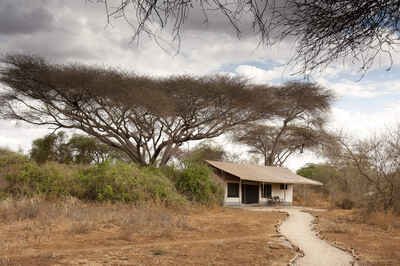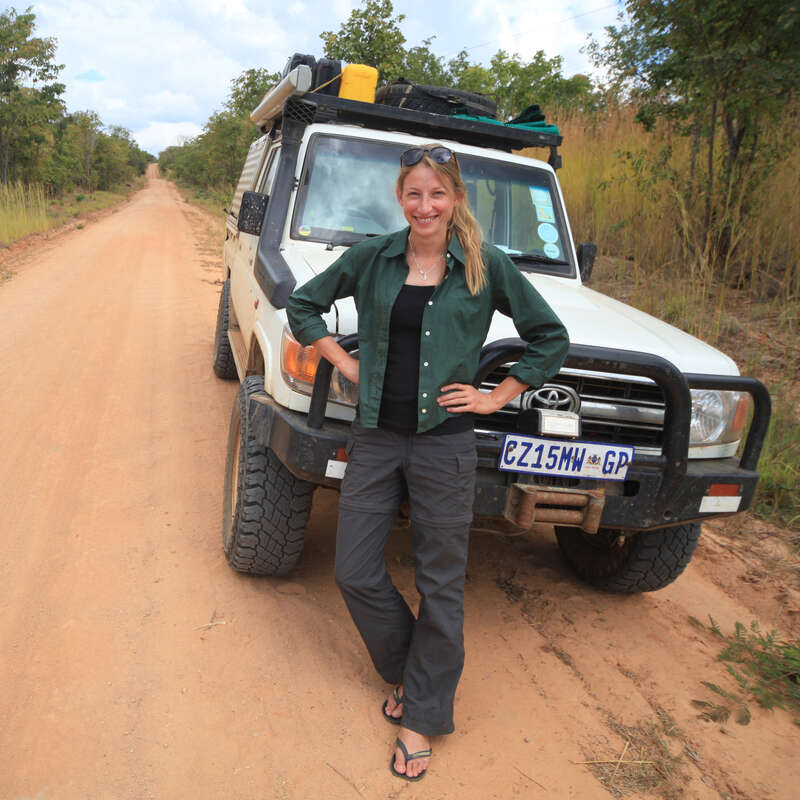About Porini Amboseli Camp
One of the earliest real eco-camps in Kenya, Porini Amboseli Camp first opened in 2001.
A low-impact, nine-tent camp, it is located on the Maasai-owned Selenkay (also spelled Selengei) Conservancy to the north of Amboseli National Park.
We think think Porini Amboseli Camp is one of the nicest camps in the Amboseli ecosystem. With its neatly swept, sandy paths padded by charming Maasai staff, the camp, shaded by venerable acacia trees, is like a tranquil oasis. Its green credentials and increasingly good gameviewing are further incentives to do a safari here.
Our view
We think think Porini Amboseli Camp is one of the nicest camps in the Amboseli ecosystem. With its neatly swept, sandy paths padded by charming Maasai staff, the camp, shaded by venerable acacia trees, is like a tranquil oasis. Its green credentials and increasingly good gameviewing are further incentives to do a safari here.
Accommodation
11 tents
Children
Fine for 8+
Open
1 June to 15 April
Activities

4WD Safari

Birdwatching

Cultural excursion

Guided walking safari

Night drive

Private activities
Traveller reviews of Porini Amboseli Camp
14 real, un-edited reviews from Expert Africa's travellers.
Arrived 20 Dec 2024, 3 nights
"Porini Amboseli Camp review"
Overall rating: Average
Arrived 25 Jul 2024, 4 nights
"Porini Amboseli Camp review"
Overall rating: Excellent
Arrived 9 Jan 2022, 3 nights
"Porini Amboseli Camp review"
Overall rating: Good
Arrived 14 Nov 2021, 1 nights
"Great community ethos"
Overall rating: Excellent
Arrived 5 Sep 2019, 3 nights
"A good start to our trip"
Overall rating: Good
Arrived 2 Mar 2019, 3 nights
"Excellent safari at Porini Amboseli"
Overall rating: Excellent
Arrived 20 Jan 2019, 2 nights
"Fantastic Experience at Porini Amboseli"
Overall rating: Excellent
Arrived 23 Jul 2017, 3 nights
"Porini Amboseli"
Overall rating: Average
Arrived 22 Jun 2017, 6 nights
"Porini Amboseli Camp review"
Overall rating: Excellent
Arrived 7 Sep 2016, 4 nights
"Amazing elephants"
Overall rating: Good
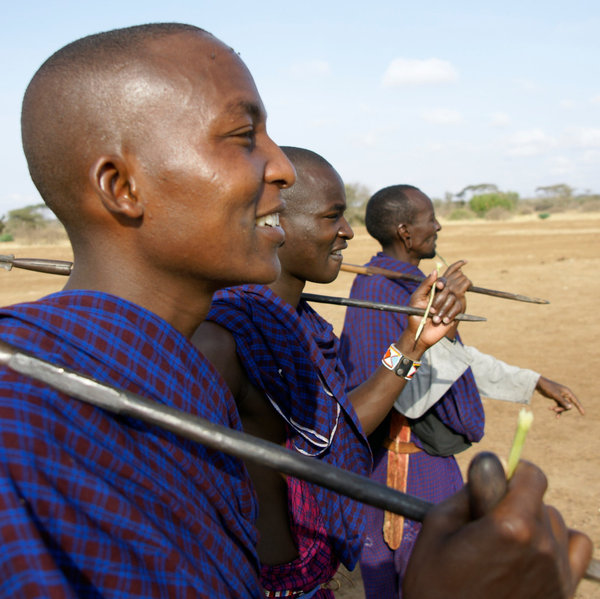
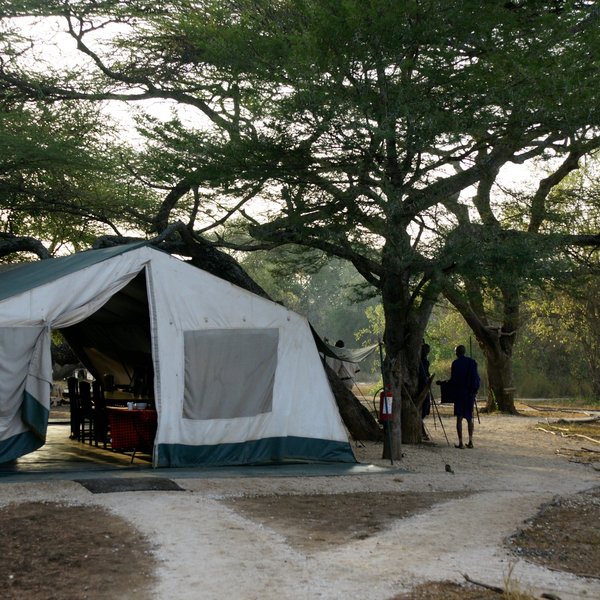
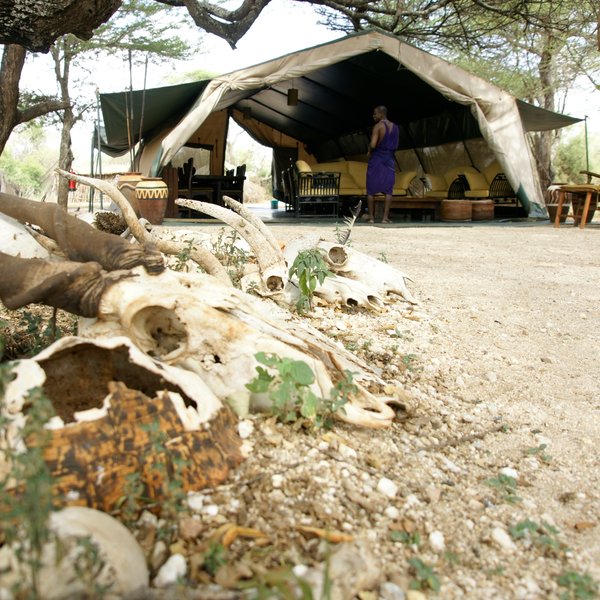
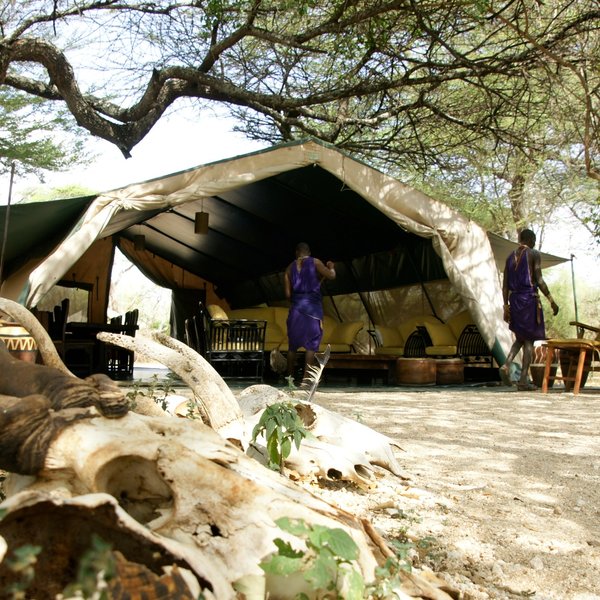
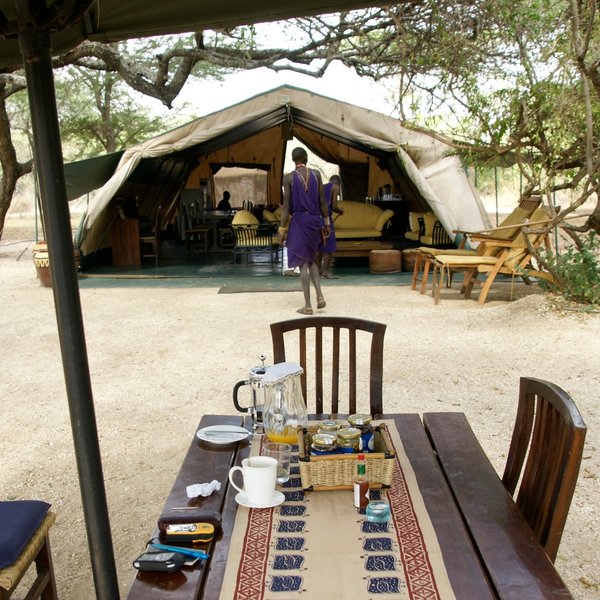
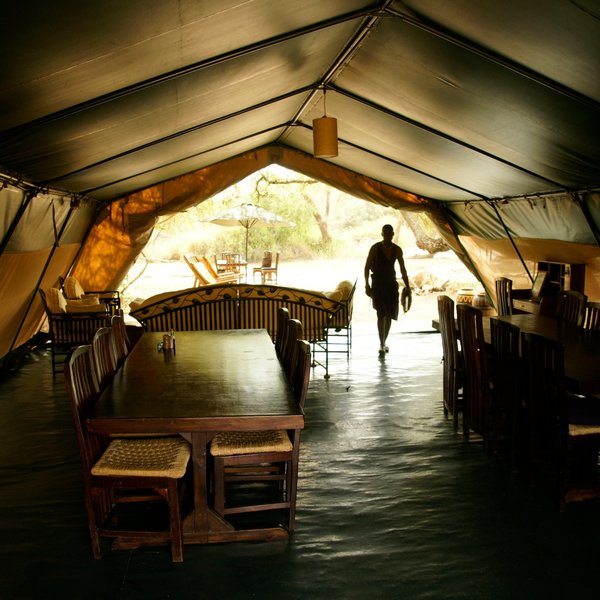
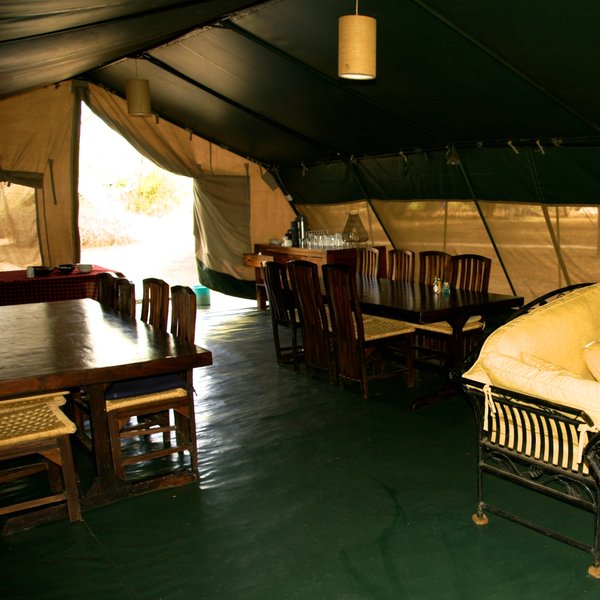
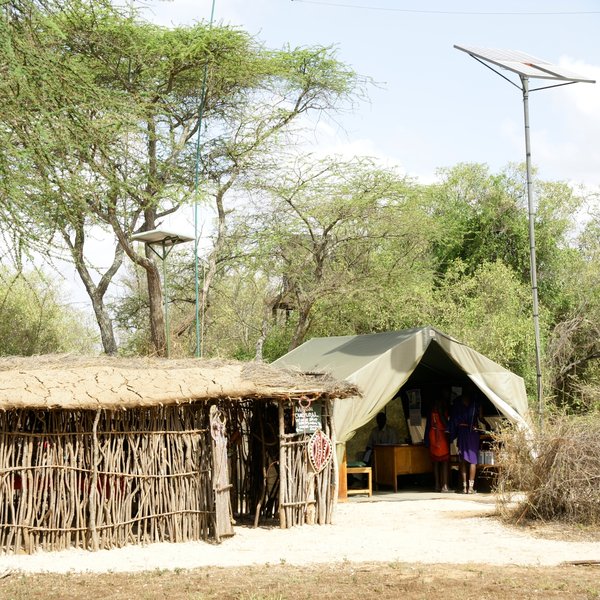
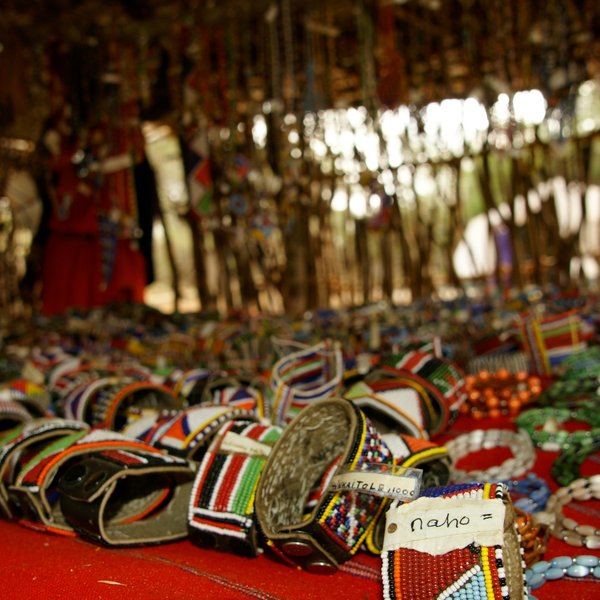
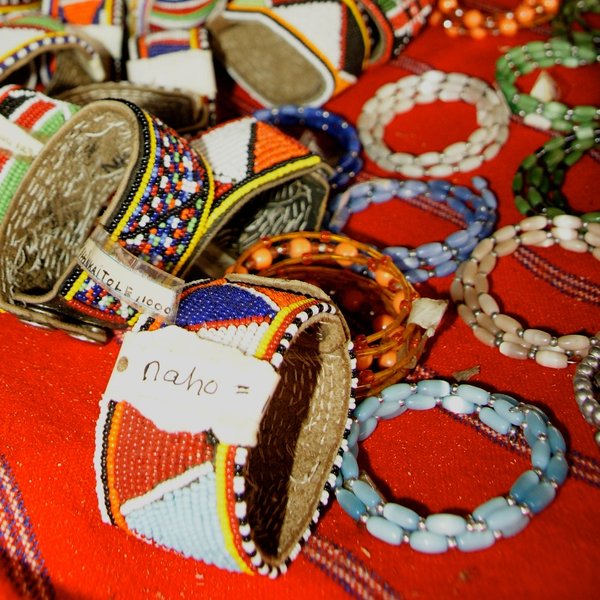
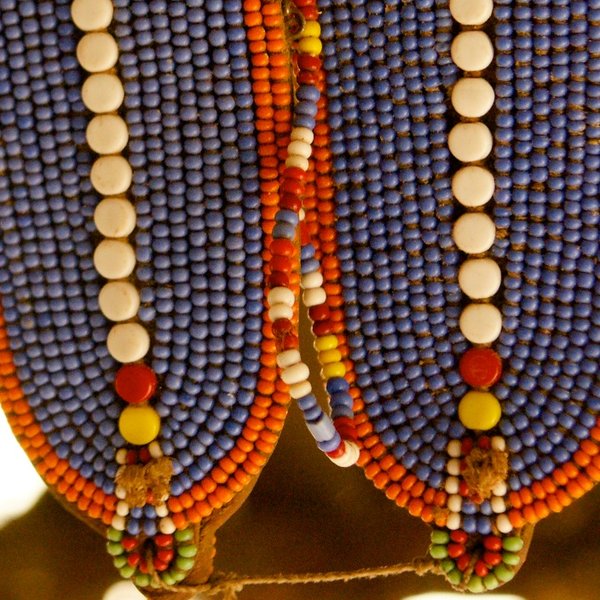
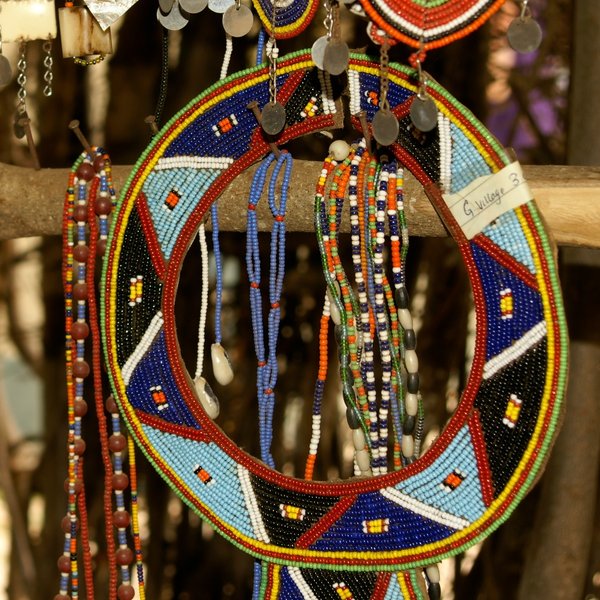
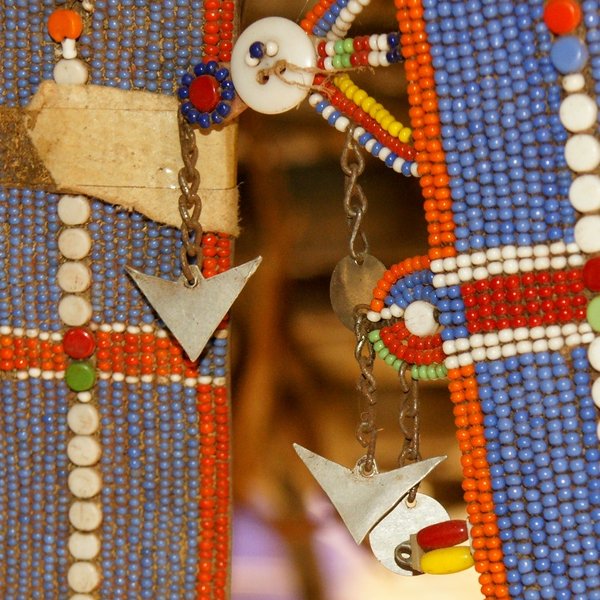
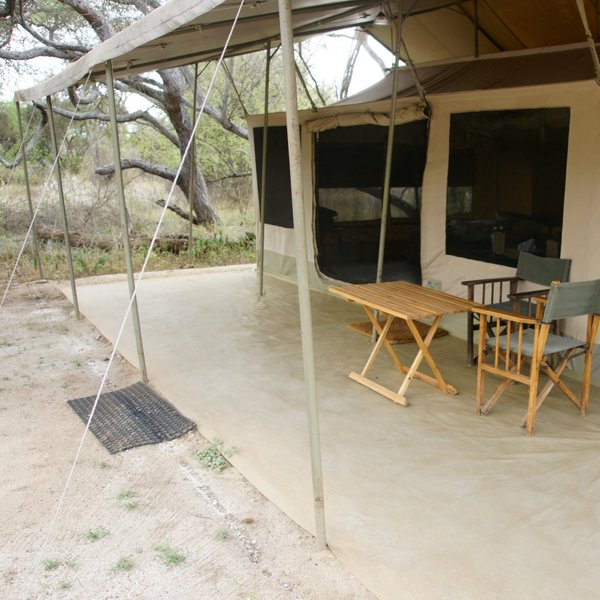
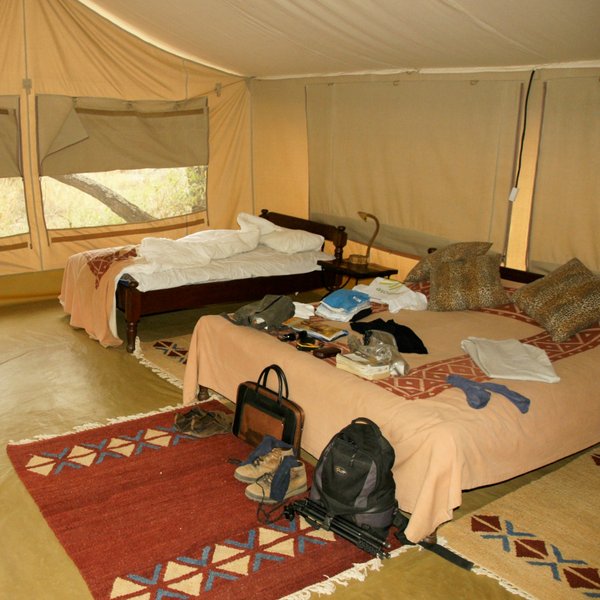
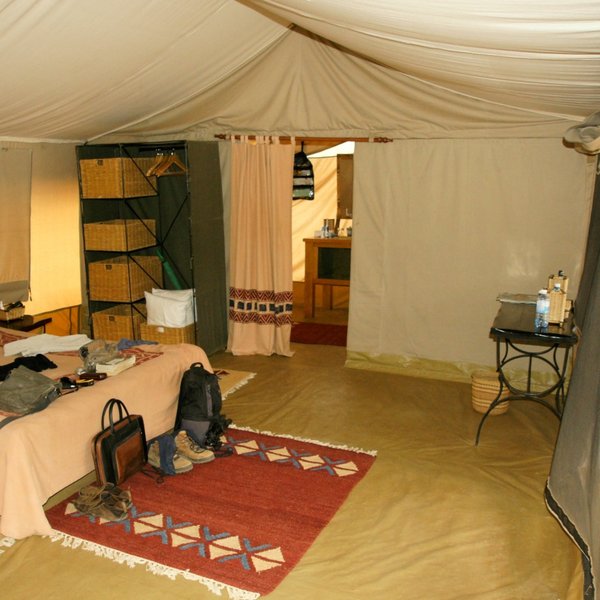
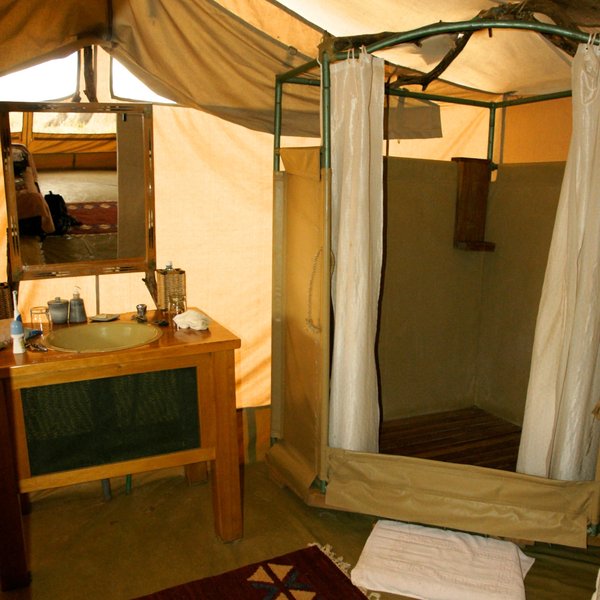
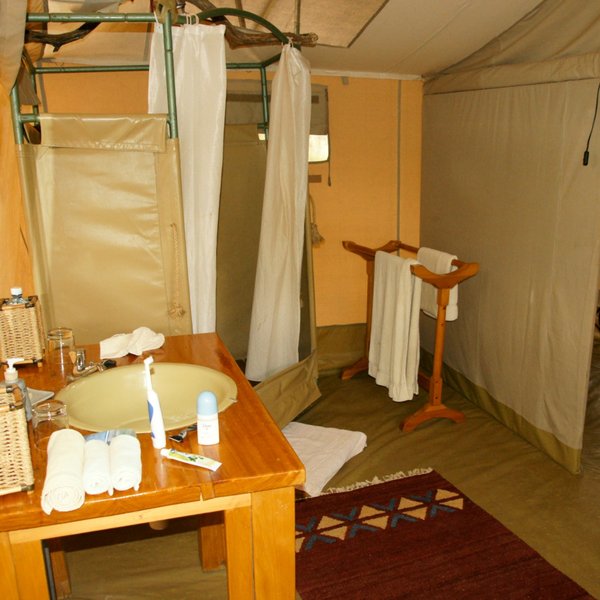
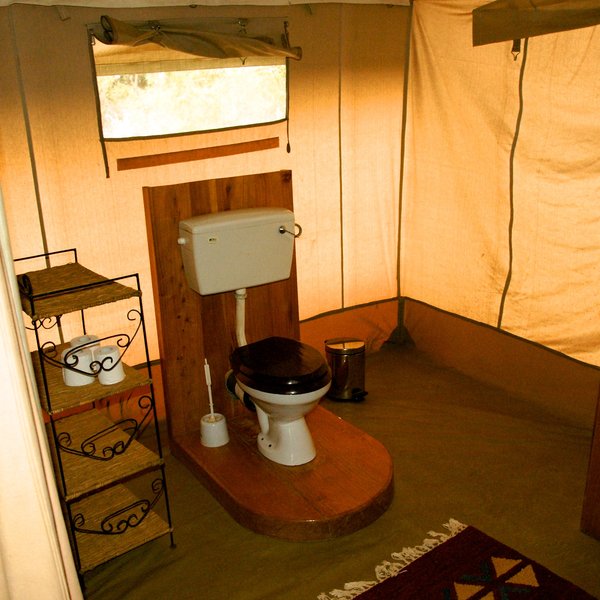
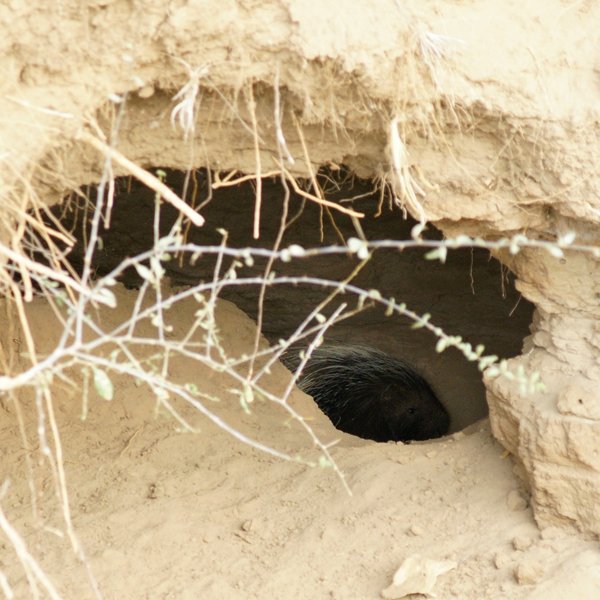
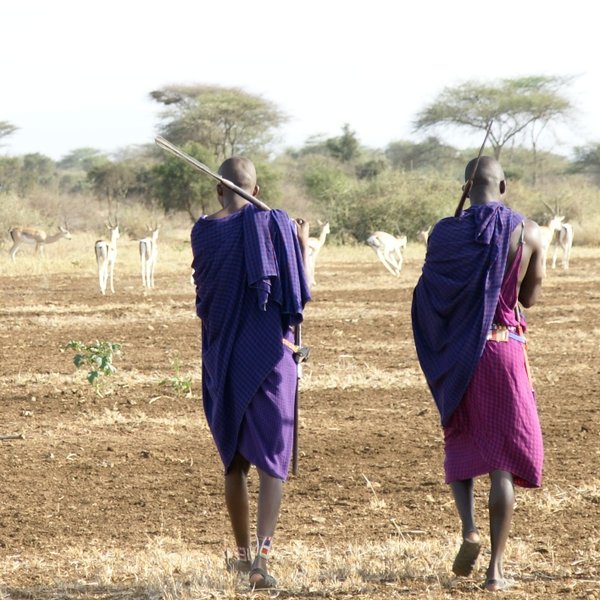
Expert Africa's gallery
When we travel we take lots of photos ourselves to give you a real and un-edited view of the safaris. See our 40 pictures of Porini Amboseli Camp to get the candid view.
View galleryPorini Amboseli Camp: Our full report
One of the earliest real eco-camps in Kenya, Porini Amboseli Camp first opened in 2001.
A low-impact, nine-tent camp, it is located on the Maasai-owned Selenkay (also spelled Selengei) Conservancy to the north of Amboseli National Park.
The most outstanding feature of a safari here is the community aspect. There aren’t any time-serving, long-distance staff at Porini Amboseli: you’re looked after by local Maasai warriors and elders, generating income directly for their families. Apart from the manager and head chef, all the staff are Maasai.
This relaxed, unfenced camp feels small and homely, and is nicely spread out under the trees. The central areas at Porini Amboseli consist of a large lounge and dining tent, with sofas and armchairs. There’s a long table where guests usually eat with the manager and sometimes one or two senior guides. Alongside the dining table, drinking water, tea, infusions and coffee are available throughout the day.
Outside the lounge/dining tent, tables are set out for breakfast and lunch under the trees, where you can watch bare-faced go-away birds – and often vervet monkeys – hopping through the big trees overhead.
Behind the lounge and dining tent, there’s a small office tent, with the camp’s radio and communications equipment, and the ‘signal tree’ where you’re most likely to get some cellphone network and the staff leave their mobile phones to receive texts.
Nearby, a traditional-style hut houses the Porini Amboseli crafts shop. Here, the local community sell their jewellery, leather goods and traditional weapons at fixed, marked prices. Each piece is labelled with the maker’s name, and sales are carefully recorded to ensure they receive their due. It’s a refreshing change from the hustly atmosphere at some of the roadside ‘curio markets’ in Maasai-land, where it’s hard to browse in peace and prices start sky-high, expecting to be beaten down.
The ten guest tents at Porini Amboseli are very spacious, traditional canvas, cotton and vinyl set-ups, pitched directly on the flat, sandy ground and shaded by capacious flysheets.
On the veranda area of each tent there are canvas and wood directors’ chairs and a table. Inside, the tents are simply furnished with thick rugs, a double and a single bed, clothes hanging and storage space and a simple dressing table. The bathrooms, through a flap at one end, feature a washstand and basin with a good-sized mirror, a standard flushing toilet, and nicely presented toiletries. The showers are a good size, with wooden drainage floors, and supplied using the ‘bucket shower’ system: you’ll be asked when you want to shower and a member of staff, standing at the back of your tent, will haul a supply of hot water to the reservoir above your shower and call you when it’s ready to flow.
The camp’s drinking water is supplied in bottles, and washing water comes from a local borehole. Porini Amboseli’s green credentials are evident throughout : all their organic waste is composted and disposed of locally, while inorganic trash is bagged up and trucked back to Nairobi. The camp has a gold rating from Eco-Tourism Kenya.
The activities included at Porini Amboseli are day and night drives, bush walks, sundowners and a completely uncommercial visit to a nearby Maasai village (at no extra cost). The camp has constructed viewing platforms over three waterholes in the conservancy – one within walking distance of the camp – which can prove ideal for photographers.
There is very good birding here, and the camp has an outstandingly good bird guide, Wilson ole Kasaine, who can often be requested to accompany guests on walks and drives. And the elephant-viewing can be spectacular, especially in the wet season, when the herds roam far and wide away from the Amboseli swamps. The elephants of the Amboseli ecosystem are considered less aggressive than those of the Maasai Mara.
The 13,000 acre Selenkay Conservancy is bushier than much of the greater Amboseli ecosystem, and the wildlife is somewhat less habituated than in the national park, but game viewing (in the camp’s well-adapted vehicles or on foot) can still be good, with elephant, lion, leopard, cheetah, giraffe and zebra all present, as well as several less common species, including caracal, African wild cat, gerenuk, lesser kudu and striped hyena. There’s a porcupine den close to the camp.
Porini Amboseli is a sister camp to the more recently built Porini Mara Camp, Porini Lion Camp and Porini Rhino Camp with which it is often combined.
Activities
4WD Safari
Birdwatching
Cultural excursion
Guided walking safari
Night drive
Private activities
Families & children
- Attitude towards children
- Children age 8 and above are welcome, although depending on other guests and the circumstances, younger children can sometimes be accommodated.
- Property’s age restrictions
- No under-8s
- Special activities & services
- Activities for children include Maasai spear throwing, animal tracking and meeting with local Maasai children.
- Equipment
- None
- Generally recommended for children
- The age restriction at Porini Amboseli means that children are expected to be mature enough to appreciate the environment and behave responsibly in it. The camp undoubtedly offers a very rewarding experience to children who are interested in wildlife, local culture and the African bush.
- Notes
- The atmosphere at Porini Amboseli is generally quite adult and there’s nowhere for lively children to let of steam – they will need to appreciate the bush environment and be prepared to behave accordingly.
Food & drink
- Usual board basis
- Full Board & Activities
- Food quality
- At Porini Amboseli the dining tent (or ‘mess tent’ as it’s often called) is very flexible. You can have hosted meals with the camp manager, which is the norm, or if you want to dine separately that’s fine. Bush dinners and breakfasts are also available with notice the day before at no extra charge.
The food here is wholesome and plentiful, if not particularly fancy. The weekly rotating menu at the four Porini camps ensures that your meal selections won’t be repeated if you’re staying in more than one of their camps.
After early tea or coffee and biscuits, you come back from your first walk or drive of the day to a full breakfast – broadly English-style, including the usual cooked bacon, sausages and eggs to order – with cereals, fruit, juices and usually a special bread or pastry of the day.
Lunch tends to be a fairly light meal but with three courses, and several choices, for example cold gazpacho or spinach and feta tart, coronation chicken salad, couscous or quiche, and a dessert of banoffee pie or fruit kebabs and yoghurt.
With your sundowner, the nibbles (or ‘bitings’) vary every day, and could be vegetarian tempura, soy roasted cashews or grilled paneer, as well as the usual chips and nuts.
Dinner is the day’s main meal, with three courses and always a vegetarian option. The menu might start with carrot and coriander or butternut soup, followed by red Thai chicken curry, fish fillets or a very good roast chicken. Vegetarian options vary each evening, and include vegetable curries, stuffed pancakes, moussaka and stuffed bell peppers. Dinner always finishes with a good dessert – brownies and fudge sauce, baked apples and caramel sauce, or a fruit crumble for example. - Dining style
- Group Meals
- Dining locations
- Indoor and Outdoor Dining
- Further dining info, including room service
- Meals can be served at guest tents by advance arrangement.
- Drinks included
- Soft drinks, local beer, house wine and gin are included. Other drinks are not available and guests should bring any special requirements with them or order special requests in advance when booking.
Our travellers’ wildlife sightings from Porini Amboseli Camp
Since mid-2018, many of our travellers who stayed at Porini Amboseli Camp have kindly recorded their wildlife sightings and shared them with us. The results are below. Click an animal to see more, and here to see more on our methodology.

100% success

100% success

100% success

100% success

100% success

100% success

100% success

86% success

86% success

71% success

29% success

14% success

0% success

0% success

0% success

0% success

0% success
Getting there
- Location
- Amboseli and the Chyulu Hills, Kenya
- Ideal length of stay
- 3 or 4 nights
- Directions
- Selenkay airstrip (charters) is about ten minutes from Porini Amboseli Camp. For arrivals by scheduled services to Amboseli National Park’s main airstrip, the transfer to Porini Amboseli takes around 90 mins, depending on whether you pause to watch wildlife en route. It can be a bumpy ride, but it is all part of the adventure!
- Accessible by
- Fly-and-Transfer
Special interests
- Birdwatching safaris
- Renowned Maasai birding guide Wilson ole Kasaine (one of the best birding guides in Africa) is on hand as one of the camp’s guides here, and with over 200 bird species in the camp's private Selenkay Conservancy, this is a great place for birdwatching in Kenya.
- See ideas for Birdwatching safaris in Kenya
- Cultural Experiences
- Most guests will visit a local Maasai village during their stay and you can interact with people and learn something about the Maasai way of life. With no fees charged and nothing sold, this provides genuine, brief insights into Maasai culture.
- See ideas for Cultural Experiences in Kenya
Communications
- Power supply notes
- There is a backup generator, but it is very rarely started.
- Communications
- The cellphone signal is relatively weak. There is no wi-fi in camp.
- TV & radio
- None
- Water supply
- Borehole
- Water supply notes
- A piped water supply provides water for the washbasin and flush loo. Hot water is provided for pre-dinner safari showers and early morning washes, but can be provided at any time on request. All cooking and drinking water is commercial bottled water that is brought into camp in big barrels. Three efficient bio-digesting septic tanks have been installed.
Health & safety
- Malarial protection recommended
- Yes
- Medical care
- Porini Amboseli Camp has staff trained in first aid and they undergo regular refresher courses. The nearest medical clinic is about 12km away (a 30-minute drive) at the village of Lengisi, where the Italian Dr Francisca is on call. In case of emergency, the airstrip close to camp is available for medical evacuation.
- Dangerous animals
- High Risk
- Security measures
- Maasai guards with spears guard the tents and guests. There are also two local APOs (Administration Police Officers) based in camp who are armed with automatic G3 guns. They are discreet and normally out of sight of guests. All guided walks are accompanied by an armed APO.
- Fire safety
- All staff are fire-trained and extinguishers are provided and placed at every tent and serviced every six months.
Useful info
- Disabled access
- On Request
- Laundry facilities
- No laundry service.
- Money
- Valuables can be left for safe keeping in the manager's safe. but there are no safes in tents. Currency exchange is not possible.
- Accepted payment on location
- Rates are fully inclusive. There are no extra charges payable at camp and no facility to accept cash payments or credit card payments. Items from the shop can be paid for with cash and the funds are paid in full directly to the maker of the item.
Plan and book your trip with Expert Africa
All of our trips are tailor-made, so we'll always adapt them to suit you. Talk to an Expert and let us plan and arrange your perfect trip.

Talk to an Expert
Call or email us now! We’ll match you with the Specialist in our team who is best suited to help you. Then together we can start planning your trip.

Set up your itinerary
Based on our experience and your ideas, your specialist will create a detailed, costed itinerary. We’ll refine it together, until we have a trip that you’re perfectly happy with.

Prepare for your trip
The same Specialist will make the seamless arrangements for your trip, send you detailed travel documents, and be available to answer any questions before you depart.

Travel with peace of mind
After you set off, you’ll be cared for by our partners in Africa, most of whom have worked with Expert Africa for decades. And if you ever need us urgently, we’re available 24/7.

When you return
We love to learn about your trip, and so will always be grateful if you’ve the time to give feedback to your Specialist when you return.
Porini Amboseli Camp's location
Look closer at the environment and surroundings of Porini Amboseli Camp.
Other lodges in Amboseli and the Chyulu Hills
Alternative places to stay in this same area.
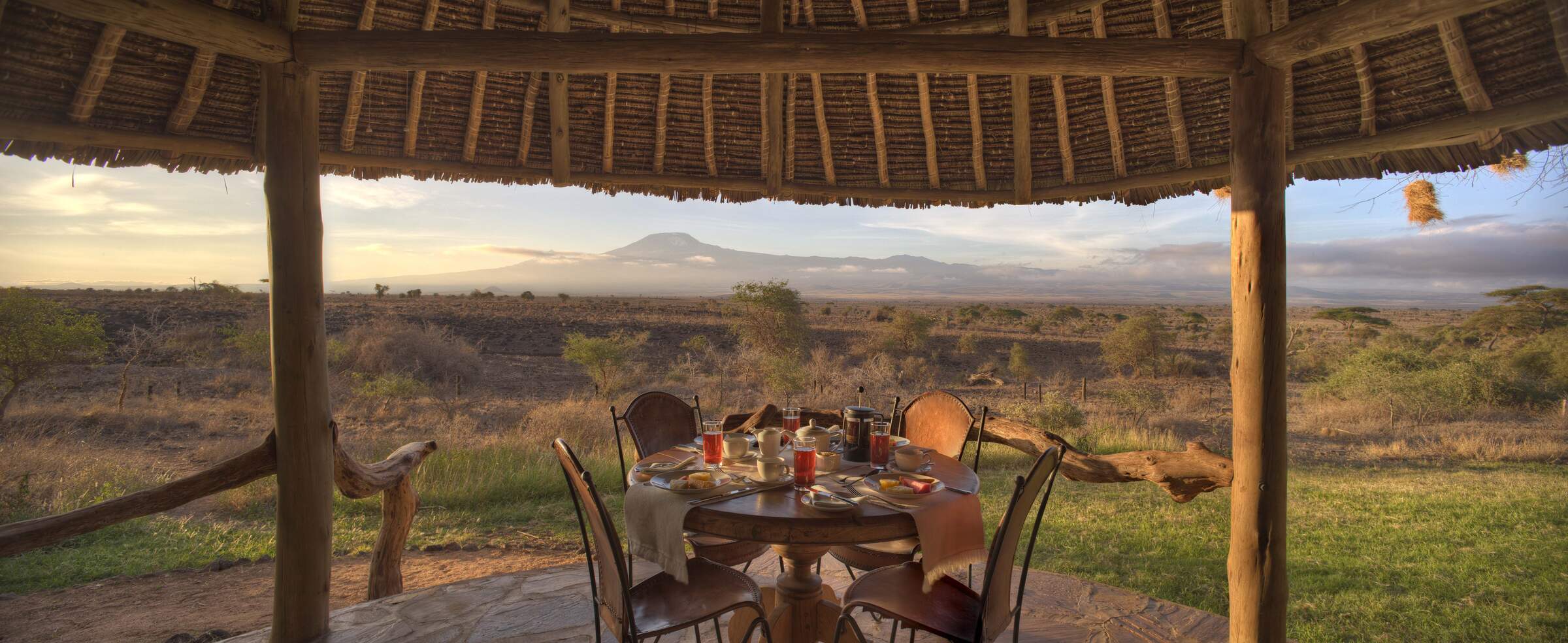
Tortilis Camp
Tortilis is a finely situated and well built safari camp located in the private Kitirua Consarvancy just outside Amboseli National Park and with wonderful views of Kilimanjaro.
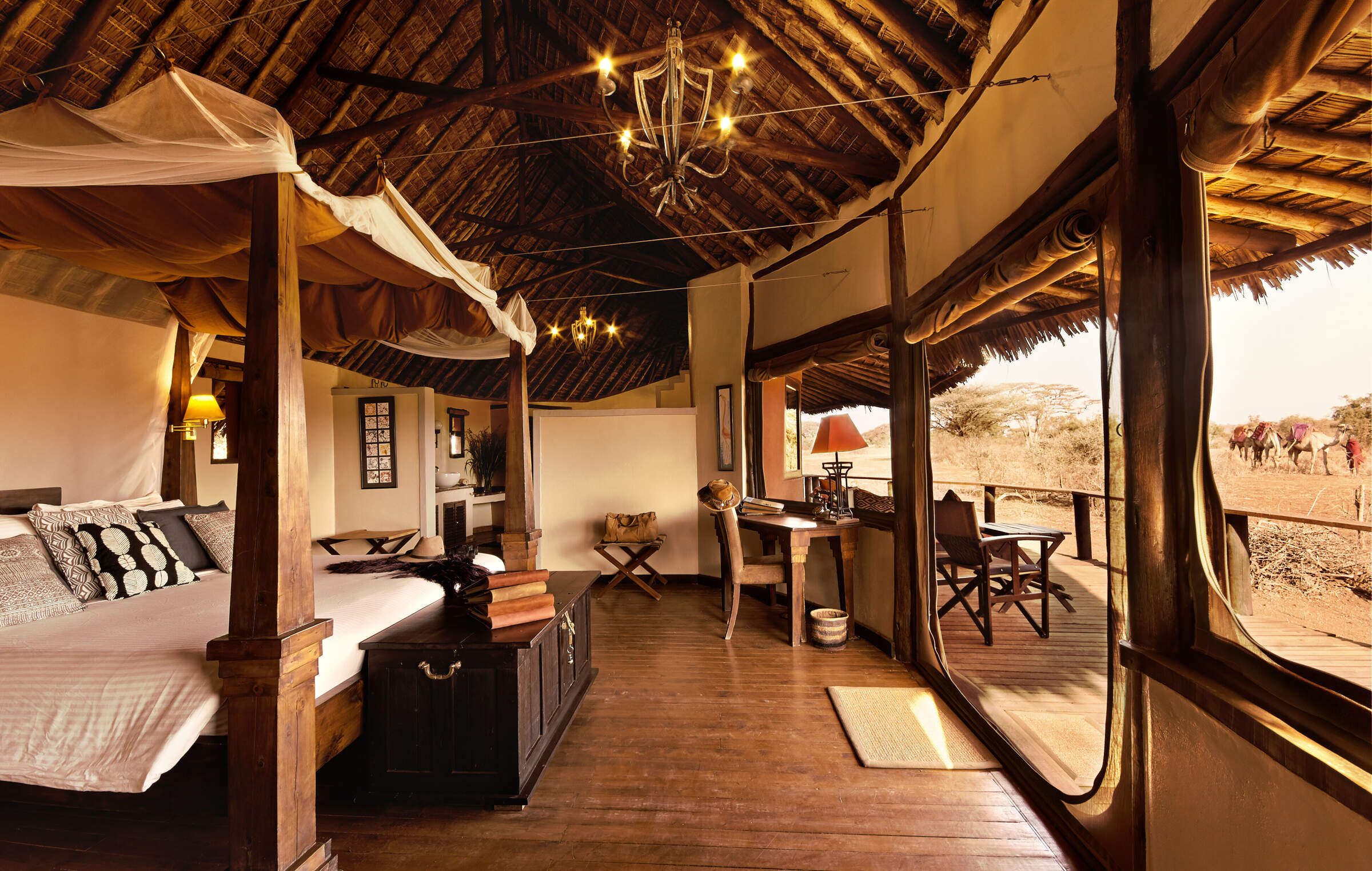
Tawi Lodge
Tawi Lodge is modern, luxury safari lodge on a private wildlife conservancy in the Amboseli ecosystem in southern Kenya.
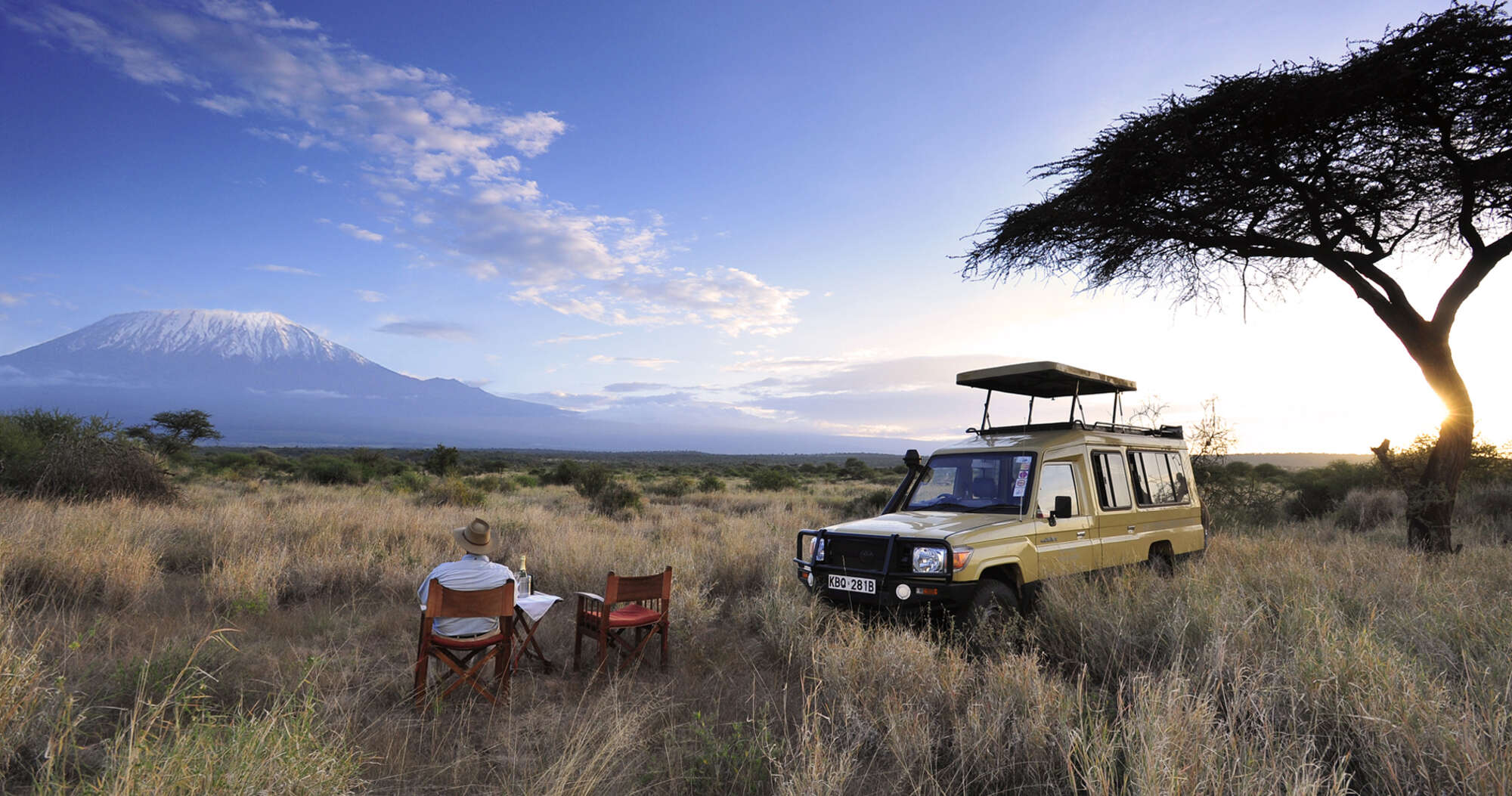
Satao Elerai
The closest camp in Kenya to Mount Kilimanjaro, Satao Elerai is located in its own, private conservancy, the Elerai Conservation Area, just outside Amboseli National Park.

Selenkay Adventure
Selenkay Adventure Camp is the dome-tent satellite camp of Porini Amboseli Camp, located in the Maasai-owned Selenkay Conservancy, one of the oldest community wildlife conservancies in Kenya.
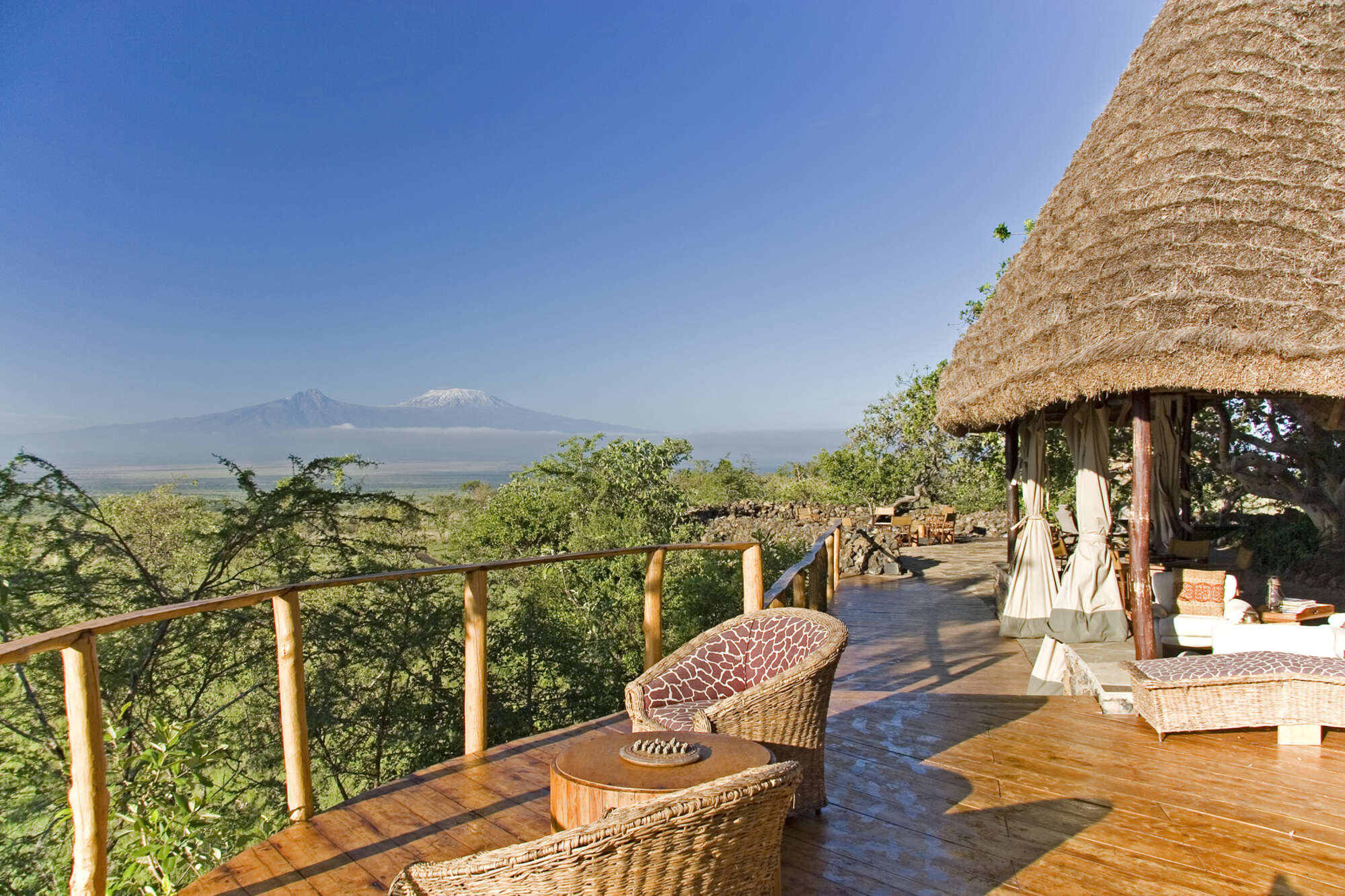
Campi ya Kanzi
Campi ya Kanzi is a very well integrated, eco-friendly bush lodge and tented camp on the slopes of the Chyulu Hills in its own, 1000-square-kilometre Maasai conservancy.
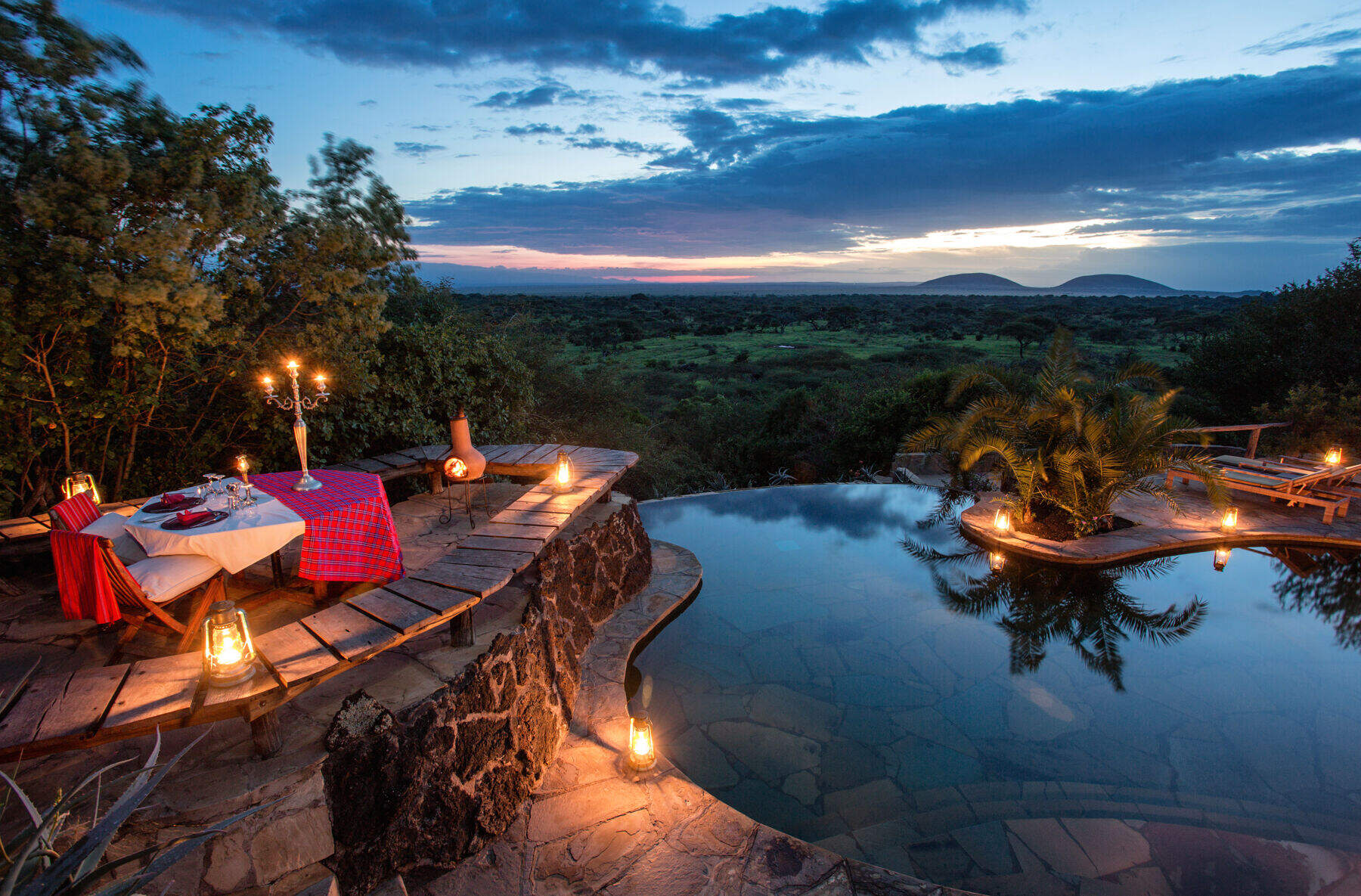
Ol Donyo Lodge
Ol Donyo is a luxurious and innovative designer safari lodge with magnificent views and excellent walking, riding and wildlife country in its own private conservancy.
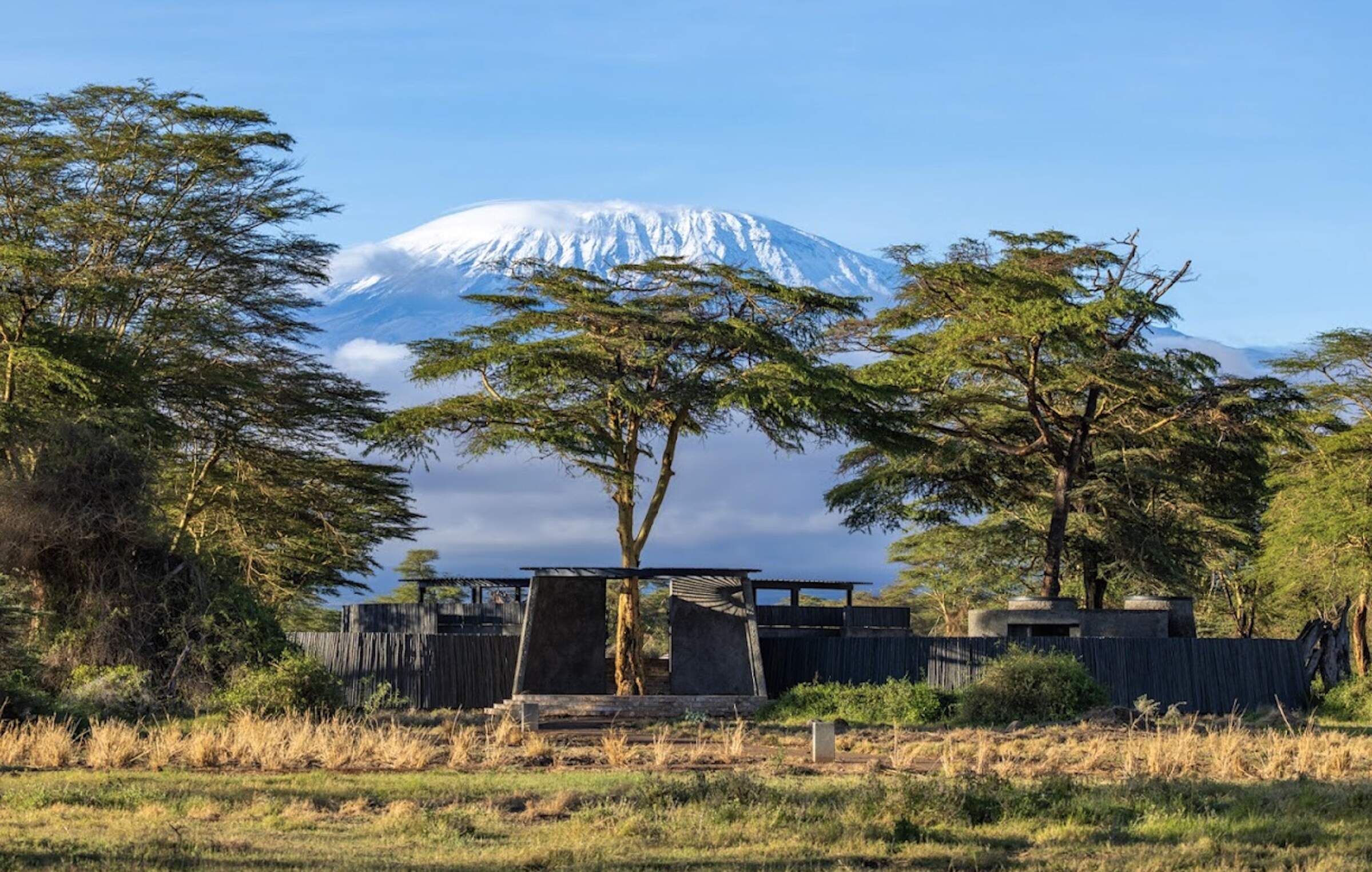
Angama Amboseli
Angama Amboseli is a luxury safari camp in the long-established Kimana Conservancy, about a 45-minute drive east of Amboseli National Park.
When to go to Amboseli and the Chyulu Hills
Our month by month guide: What it's like to visit Porini Amboseli Camp in Amboseli and the Chyulu Hills
Jan
Feb
Mar
Apr
May
Jun
Jul
Aug
Sep
Oct
Nov
Dec
Kenya in January
Clear, hot days and warm nights make this high season a popular time for safaris and it’s also good for diving and snorkelling as water clarity is excellent and gets better as the dry season progresses. Most lodges and tented camps treat January after the New Year week is over, as mid-season, making it a good compromise in terms of value for money with reasonably reliable, dry weather and some greenery left in the landscape.
Expert Africa bases its description of climate and weather in January, like the other months of the year, on the climate records of roughly the last 100 years, and it's fair to say that the weather and seasons since the beginning of this century have been highly irregular and unpredictable.
- On average, January is the second driest month of the year
- Elephants dig waterholes in the dry riverbed in the Samburu reserve.
- Wildebeest and many antelope have their calving season, to February.
- Migrant birds are seen in huge numbers, especially in the Rift Valley.
- Sea water clarity around the coral reefs generally good.
Our view
Fantastic: the very best time to visit
Weather in January
Kenya in February
With the short dry season well established, the grass grazed down and wildlife gathering close to water points, this is still a good time for a safari. Good water clarity in the Indian Ocean's coastal waters makes for excellent diving and snorkelling conditions.
Expert Africa bases its description of climate and weather in February, like the other months of the year, on the climate records of roughly the last 100 years, and it's fair to say that the weather and seasons since the beginning of this century have been highly irregular and unpredictable.
- On average, February is the driest month of the year.
- It’s sometimes possible to swim with whale sharks at Diani Beach.
- Migrant birds are still seen everywhere, especially near water.
- This is usually peak calving season for wildebeest and many antelopes.
- This month is often the hottest of the year, especially on the coast.
Our view
A very good time to visit
Weather in February
Kenya in March
Hot, increasingly humid weather – with good diving and snorkelling conditions at the start of the month – gives way to rains and lower accommodation costs. Expert Africa bases its description of climate and weather in March, like the other months of the year, on the climate records of roughly the last 100 years, and predicting the seasons since the beginning of this century has been difficult.
March is the month when – traditionally – intensely hot conditions build up until a cloudburst finally happens at the end of the month or in early April, to relieve the humidity. As ever, regional variations across the country can greatly impact on visitors' experiences.
- Sea-water clarity is best for diving before the long rains start.
- Visitor numbers are low, though the Easter holidays can be busier.
- Night skies can be scintillatingly clear in early March.
- Cropped down savannah grasses can make it easier to see the wildlife.
- Temperartures climb high, especially at lower elevations.
Our view
A good time to visit, with pros & cons
Weather in March
Kenya in April
April sees the full onset of the southeast monsoon wind or kusi, which heralds the long rains. Temperatures drop soon after the rains are established and you’ll often have facilities largely to yourself in this more affordable low season, sometimes known as the "green season". The bush quickly springs to life, with greenery sprouting almost before your eyes. While you're likely to get a fair number of heavy showers, the breaks in the rain can yield sparklingly clear conditions.
With the dust settled and bright sun piercing the clouds, conditions can be sublime for photography, especially first thing in the morning or in the late afternoon with another storm brewing. You may be lucky, or you may find conditions very wet and muddy.
- A wet month, the coast often gets more than 300mm (12in) of rain.
- Sunny spells can provide great light for photography.
- Buffalo and zebra calving season often happens in this month.
- Baby crocodiles hatch, for example on Central Island in Lake Turkana.
- Palearctic migrant birds gather to fly north to breeding grounds.
Our view
A time to avoid if possible
Weather in April
Kenya in May
While game viewing can be trickier as vegetation runs riot, between the cloudbursts the colours and light are great for photography at this time of year. Expert Africa bases its description of climate and weather in May, like the other months of the year, on the climate records of roughly the last 100 years, and while it's reasonable to expect heavy rains in many parts during this month, especially on the coast, the rains don't always come evenly or in some areas come at all.
In an El Niño year, the so-called long rains that normally are established across much of the country by May can be meagre, to the despair of farmers. On the other hand in a La Niña year, the long rains can bring floods. On the coast, the monsoon winds make the climate much more predictable, with heavy rains common throughout this month.
- Frogs breed in the ponds in the Arabuko Sokoke Forest near Watamu.
- Wildebeest, impala and other grazers are in rut (the breeding season).
- Kilimanjaro looks its best as heavy rain falls as snow on the summit.
- There's a sharp peek of rainfall on the coast with many rainy days.
- Accommodation prices are uniformly low, while some camps close.
Our view
A time to avoid if possible
Weather in May
Kenya in June
The rains give way to cloudy, cooler weather, often making for comfortable conditions by the end of the month, especially in the highlands. Starting from mid-June or the beginning of July and running until the end of October, this is the high season, and accordingly has higher accommodation rates and – at least until early September – higher numbers of visitors.
While the early part of June can often be rainy on the coast, it can be a great time to go on safari, with fresh greenery, many young animals and good photographic conditions with clear air.
- The Taru Desert, inland from the coast, is carpeted with flowers.
- The Lake Turkana Cultural Festival is held in Loiyangalani.
- Madaraka Day (commemorating self rule) is 1 June.
- The annual Lewa marathon runs a course through the wildlife.
- The Diani Rules "sports" event rips up the rulebook at Diani Beach.
Our view
A good time to visit, with pros & cons
Weather in June
Kenya in July
Kenya’s “winter" season sets in (winter is a misnomer but locals feel the change), and the highlands can be rather grey. Skies are often cloudy and the days can be surprisingly cool, with an average daytime high in many highland safari areas of 15-20°C and night-time temperatures dropping below 10°C in Nairobi and the highlands. Lower parts of the country and the coast are usually warm and dry, typically reaching highs of around 25°C with lows in the high teens.
As this is the start of the high season, coinciding with the usual arrival of the wildebeest migration in the Maasai Mara, July is a busy month. Ask your Expert Africa specialist to advise on how to avoid the crowds, which is not that difficult to do.
- The wildebeest migration usually reaches the Maasai Mara in July.
- Simbi Lake (Kisumu) and Crater Lake (Naivasha) can attract flamingoes.
- Watersports start to pick up and some surfing is possible at Malindi.
- Afternoon thunderstorms are a common feature in the Maasai Mara.
- The sea can be choppy along the coast, making diving difficult.
Our view
A good time to visit, with pros & cons
Weather in July
Kenya in August
The Great Migration fills the plains of the Maasai Mara, and school’s out, so the park roads are full of tourists – ask your Expert Africa specialist for advice on crowd avoidance tactics. Choose a private conservancy rather than a public national park or national reserve for quieter conditions.
Like July, August is generally mild and relatively dry in the safari areas, but it can be very chilly in the highlands, even in the middle of the day, and hail occasionally falls above altitudes of around 2,400m (8,000ft). Nairobi can be disappointingly overcast, with low cloud.
- Apart from Christmas holidays, this is the busiest month of the year.
- Late August sees peak wildebeest drama at the Mara River crossings.
- Coastal winds are good for kite- and wind-surfing.
- Few mosquitoes are around at this generally dry time of year.
- The annual Camel Derby takes place in the Samburu capital, Maralal.
Our view
A good time to visit, with pros & cons
Weather in August
Kenya in September
The skies clearing of cloud signals the start of hot, dry weather with little chance of rain – and, after the first few days of the month, far fewer visitors – making the latter part of September a good time for a quieter safari. While early September is often good for dramatic migration crossings along the Mara River, you might consider deliberately postponing your trip until later in the month, when the migration can still be very impressive and visitor numbers fewer.
If tourist surges are somewhat predictable, however, the patterns of the wildebeest migration are more volatile, and like all of Expert Africa's climate and weather assessments, they are based on accumulated years of experience rather than guaranteed certainty.
- This is still high season, with prices to match.
- Many river crossings take place on the Mara river in both directions.
- Natural bush fires flush out insects and small animals for predators.
- The Rift Valley Music Festival takes place by Lake Naivasha.
- With school holidays over by early September, late-month is quieter.
Our view
Fantastic: the very best time to visit
Weather in September
Kenya in October
Still hot, mostly dry and not too busy, this is many people’s preferred month for a safari, and it’s also good for diving and snorkelling. The wildebeest and zebra herds of the great migration are often still to be seen, though in dwindling numbers. The swamps of Amboseli attract thirsty wildlife including large herds of elephants.
While we wouldn't expect much rain across most of the country this month, the climate has become so unpredictable that you can never say never, and the possibiity of the short rains – usually associated with November to mid-December, starting early, can't be discounted.
- This month sees the tail end of the great migration in the Mara.
- Palearctic migrant birds start to arrive, staying until March.
- Turtle nests hatch at Watamu, until November.
- Amboseli elephants focus on the swamps for their daily water.
- The Indian Ocean monsoon winds turn from southeast to northeast.
Our view
A very good time to visit
Weather in October
Kenya in November
The northeast monsoon wind or kaskazi heralds the start of the “short rains", usually some time in the second half of the month. From November to mid-December, this is the low season, and accordingly has lower accommodation rates and lower visitor numbers. Across most of the country you can expect warm, somewhat cloudy weather, with occasional heavy showers and localised flooding.
Expert Africa bases its description of the climate in November, like the other months of the year, on the records of roughly the last 100 years, and it's fair to say that the seasons since the beginning of this century have been highly irregular and unpredictable: some years the short rains don't come at all, or don't reach every part of the country. In an El Niño year, the November short rains can be very heavy, but in a La Niña year, they can fail completely.
- Swimming with dolphins in Lamu can be done from now until April.
- Birders gather at Ngulia in Tsavo West to ring Palearctic migrants.
- The Lamu Cultural Festival takes over the town and Lamu Creek.
- Agricultural shows often take place regional market towns.
- This is low season, so camps can be great value, with special offers.
Our view
A good time to visit, with pros & cons
Weather in November
Kenya in December
In a typical December, the rains usually finish by middle of the month, leaving the landscape looking its best, under clear blue skies, and heralding the start of the second peak tourist season from around 20 December to the first week of January. Our assessment of the likely weather in December, like the other months of the year, is based on climate records, and it's fair to say that the seasons since the beginning of this century have been highly irregular and unpredictable.
Christmas can sometimes be wet, but most years the rains have finished a week or two earlier, with the festive season ushering in the perfect combination of clear skies and sunshine by day and starry nights.
- Christmas and New Year are busy, with the lodges and camps full.
- Rates are highest after 24 Dec, with supplements on public holidays.
- Republic Day and Independence day are celebrated on 12 December.
- Good kite- and wind-surfing restarts, with strong northeasterly winds.
- Mango season begins, providing excitement for primates and elephants.
Our view
A good time to visit, with pros & cons
Weather in December

Looking for inspiration on where to travel next?
Visit our trip chooser to explore your options and find inspiration for your perfect African adventure
Inspire me